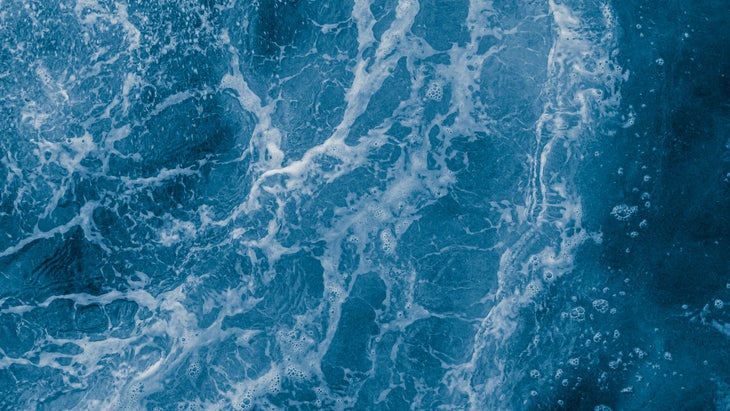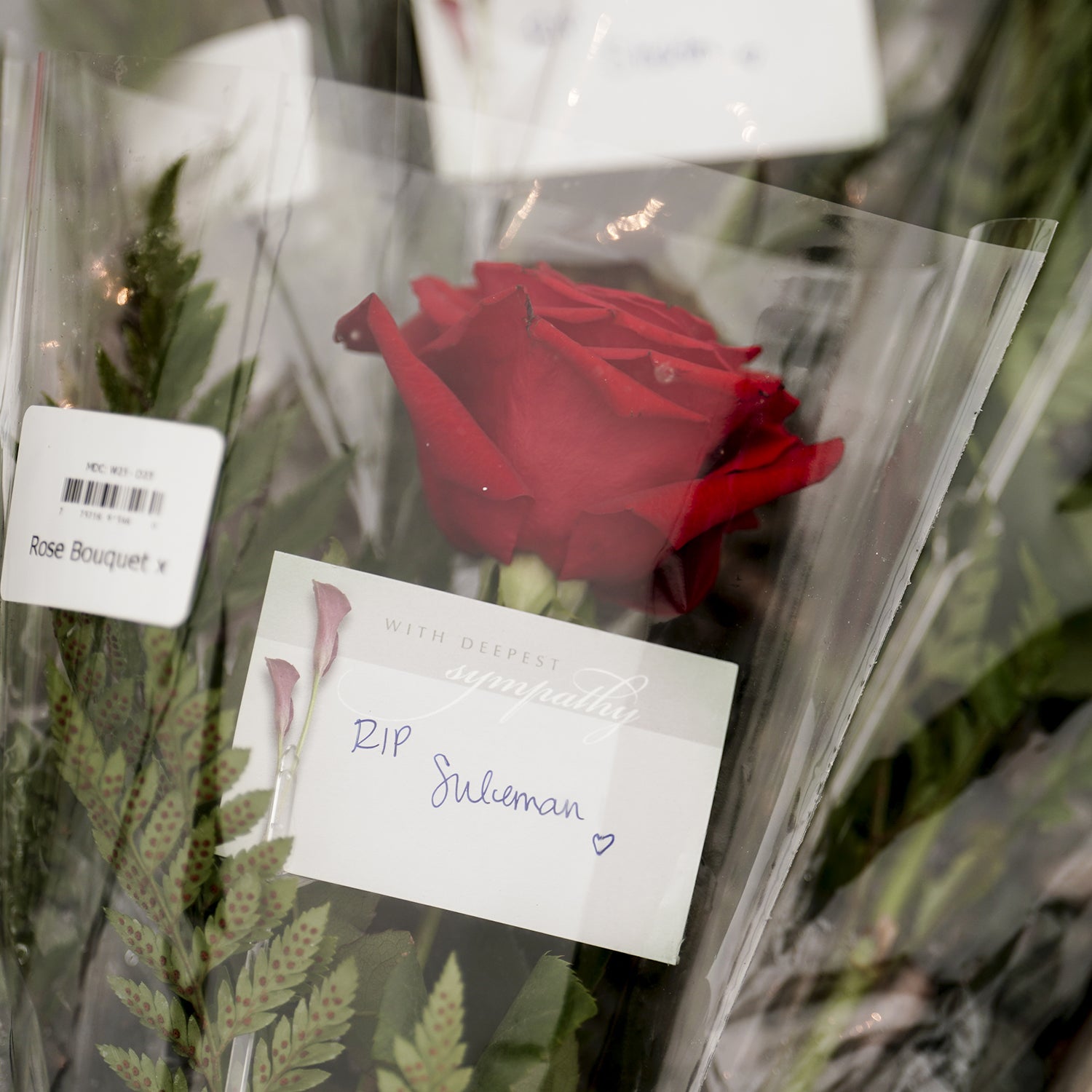February, 20 years ago, long before OceanGate’s Titan submersible imploded. It kept snowing and snowing and snowing. Slopes that hadn’t gone in 20 years were sliding. Five skiers from the Front Range were missing in the mountains outside Ashcroft, near Aspen, Colorado.
Each night as darkness fell—I remember it clearly—I’d peer out a window and wonder, Are you still out there? Can you make it to morning? The people were missing for five days. I didn’t know any of them. But I had—have—a friend, Hugh Herr, who in 1982, at 17, was lost in the wintertime mountains of New Hampshire for days, dying of cold and thirst, fearing he’d never see his family again. As a lifelong climber and skier, I’ve known many people who’ve had accidents, and haven’t exactly avoided risk myself, just tried to be careful.
That year of 1993, people with backcountry skiing experience in the Aspen area felt off-the-record certain the skiers had been buried and killed. When I heard on the radio that they had emerged, I stumbled into the common area at Climbing magazine, where I then worked. “Hey!” I cried weakly. I was trying to shout that they’d been found, but my voice cracked and failed.
People streamed out from their offices. We were all so happy—everybody in town was—but then came the harsh second-day analyses. The skiers had gone out amid storm warnings. They had split up, which is what you don’t do. There was further criticism; there always is. Usually some is fair. It’s hindsight.
Now here we are again, minus the happiness phase.

When word broke on Sunday about the missing Titan submersible, I started obsessively checking the news, wondering about the people inside. Many of us felt especially bad for 19-year-old Suleman Dawood, but I actually felt even worse for his father, Shahzada, imagining him down there looking into his son’s face, knowing that the trip had been his idea. My son, in his twenties, didn’t think the father should have castigated himself—he had offered his son an incredible adventure, and, yes, there was risk, and sometimes things go wrong. But I thought Shahzada would have been wracked.
I kept picturing the five people in the Titan: cold and huddling, rime forming on the surfaces around them, with a 19-year-old boy who was afraid and a father who felt responsible for the death of someone he loved. I did not sleep for hours.
I felt a huge jolt of hope on Tuesday night, when it was reported that banging sounds were being detected at 30-minute intervals. I remembered a brilliant, wrenching short story from 1960, “The Ledge,” which was very loosely based on a real incident in Maine. It was about a hunter, his son, and a nephew who are stranded on an offshore ledge in December, hoping for rescue as the tide rises.
The fisherman tells his son and nephew to load their guns.
“I’ll fire once and count to five,” he says. “Then you fire. Count to five. That way they won’t think it’s somebody gunning ducks.”
The systematic nature of the reported banging, possibly coming from Titan, gave me hope. On Wednesday night, knowing that oxygen in an intact-but-immobile submersible would be running out, likely gone by morning, I kept picturing the five people in there: cold and huddling, rime forming on the surfaces around them, with a boy who was afraid and a father who felt responsible for the death of someone he loved. I did not sleep for hours.
I accept that preoccupation with the �վ��ٲ���’s predicament was giving short shrift to a in the Mediterranean, off the Greek coast, five days ago. Much commentary on social media and in writing, such as on Tuesday, showed how our attention to the Titan was a misplaced priority, focusing on the few rather than the many. “Widespread outrage and anguish for the hundreds of souls taking an extraordinary risk in search of a better life,” the author wrote, “and those who failed them along the way, seems much more justifiable than the frenzy over a small, lost group of hyper-niche tourists, tragic as both circumstances may turn out to be.”
All week, many in the nation were fixated, as I was. Why? I have no simple answer. It involves many things, one being that the Titanic shipwreck is an icon, a symbol of tragedy, the way Everest is a symbol, of both excellence and tragedy.
But I was sickened by the lack of sympathy I saw on social media. “Rich people are a drain on society,” one person wrote on Twitter. “Not sure why taxpayer funds are being expended on people who bought into a fancy underwater coffin.” The same kind of schadenfreude was on display in comments attached to stories published by the Washington Post, the paper I grew up with. Sneering and jeering because the people involved were wealthy, bored billionaires who somehow deserved what was happening to them. There were jokes, with more cropping up Thursday after the implosion and deaths were announced. I saw awful puns on my Facebook feed—“sinking low,” “subpar”—and references to Darwin Award winners. Morbid humor is a common response to tragedy, but the aggregate this time was next level. I know: It’s the internet, what do we expect? Yet those on the submersible were real people.
All week, many in the nation were fixated, as I was. Why? I have no simple answer. It involves many things, one being that the Titanic shipwreck is an icon, a symbol of tragedy, the way Everest is a symbol, of both excellence and tragedy. But I think the main reason we were drawn in is that the drama was happening in real time—or so we thought, until we found out on Thursday that they’d died the first day. The passengers could still be alive, we mistakenly thought. They had over 90 hours of oxygen. I kept thinking of the Aspen skiers. They came back.
In the end, many of us were pulled into this story by the power of the individual. The most influential piece of journalism I read as a graduate student was John ���������’s New Yorker story from 1946, “Hiroshima.” It was pioneering in its approach and structure. As the professor who assigned it explained, if a reader takes in an article about hundreds or thousands of people being killed, he or she often thinks, That’s terrible, and then turns the page and goes on to something else. Hersey based his story on individuals, six of them, survivors of the atomic bomb dropped on Hiroshima in 1945. He noted where each was at the time of the blast, how far from the epicenter, and then followed them through his or her day, struggling amid the devastation. Readers experienced the events as seen by that person. It made a difference to know their names.
���������’s New Yorker editors saw what they had, a human account, all the more powerful for its muted tone. In magazine and later book form, “Hiroshima” humanized the Japanese to Americans, who were accustomed to dehumanizing them during the war. These were real people, men, women, children and babies on the ground, people with eyes burned out and skin falling off, a young mother carrying her dead infant for days, refusing to let go.
“That kid didn’t get to live his life,” I said to my husband, referring to Suleman Dawood.
“A lot of people don’t,” he said.
Ever hear the parable of the starfish? In it, a boy is walking along a beach where a storm has washed up thousands of starfish. He is picking them up and throwing them back into the waves. An old man asks why he is bothering, saying there are too many to save. “It won’t make any difference,” he says.
The boy listens, then reaches down, picks up another starfish, and wings it into the water. “Well,” he says, “it made a difference to that one.”
The point of that tale is that you can make a difference, if only to one person. My husband is in the Buddy Program, a friend and mentor to a 12-year-old; several friends work with that program, too. Why? Because there’s a world within one person.
Each of the people in the submersible was a human being, and at the end of the day—the sad end of the story—that is why we cared.
Alison Osius is an editor at �����ԹϺ���, and a former editor at Climbing and Rock and Ice magazines.


